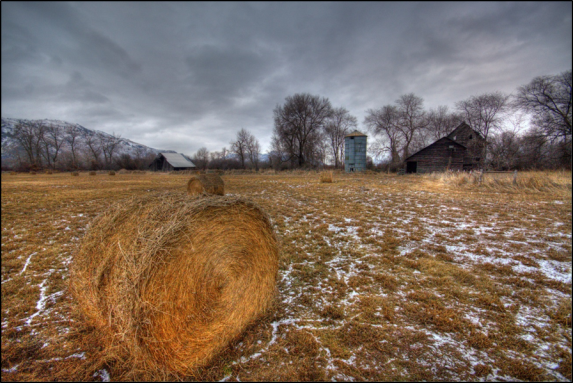This unit has limited access as it is only accessible by boat.
Alerts
-
It is unlawful for any person to cause or allow goats or sheep to be untethered or unattended on this wildlife area unit, unless otherwise permitted by the director to do so. Read full alert

The Driscoll Island Unit was established to provide goose nesting and foraging habitat, but Canada goose populations have since returned to healthy numbers. The island can be accessed by boat. This unit is still used for agricultural purposes, where hay and grain production enhances forage for upland game birds and provides cover for a variety of species. Hunting, fishing, and wildlife viewing are all popular activities on the island.
The Driscoll Island Unit is located 1 mile south of Oroville in Okanogan County.
The Driscoll Island Unit occurs in the Okanogan Watershed in the Columbia River Basin, and is located at the confluence of the Similkameen and Okanogan rivers.
This unit is part of the Sinlahekin Wildlife Area.
Game Management Units: 209, 204
Getting there
Maps and directions to WDFW-managed access points for this unit. Opens Google Maps in a new tab.
Recreation and public access
A Discover Pass is required on WDFW lands -- including water access areas, wildlife areas, and campgrounds -- unless you already have a Vehicle Access Pass issued with the purchase of an eligible hunting or fishing license. Recreate responsibly on public lands: please know the Public Conduct Rules.
Public facility information:
- Parking area on State Route 97
- No restroom
Recreation and access advisories
- Driscoll Island water access site provides hand-launch boat access to the island.
- CAUTION: If wading the Okanogan River to access the island, it is advised to do so ONLY during low water, generally from mid-July to mid-April. Visitors should NOT cross if water is high, generally occurring from mid-April through mid-July.
Hunting
Primary hunting opportunities on this unit include upland game birds.
Hunting advisories
- It is unlawful to possess shot (either in shotshells or as loose shot for muzzleloading) other than nontoxic shot for any purpose on this unit (WAC 220-414-040).
Fishing
This unit is popular for shore fishing for steelhead.
Wildlife viewing
This unit has mostly riparian and wetland habitat plus forage grain fields, offering opportunities to view mule and white-tailed deer and Canada geese.
Across State Route 97 from Driscoll and/or Eyhott Islands, sometimes bighorn sheep may be visible on the rock bluffs and cliffs. From the northwest shoreline of Driscoll Island, salmon can be seen in the Similkameen River channel during fall spawning season.
Search for potential birding opportunities on or near a wildlife area unit by using eBird Northwest, a citizen science database portal that provides freely-shared bird lists at 'hotspots' and interactive maps plus other birding information updated daily.
Conservation
This unit includes riparian, upland, and wetland habitats, and agricultural leases continue to be managed to benefit upland birds and other wildlife. The unit has large stands of black cottonwood and dense riparian vegetation consisting of hawthorne, red-osier dogwood, willow, snowberry, and native rose, providing important habitat to various species.
Special habitats and species
The island has large stands of black cottonwood and dense riparian vegetation that provides habitat for songbirds. The rare plant many headed sedge is also documented on the site. Monarch butterflies may be observed during the summer and early fall.
Conservation goals
- Develop a plan to survey and inventory all riparian ecosystems and restore degraded riparian habitat
- Implement the Forest Management Plan which identifies current forest habitats, conditions, and future management needs
The island has large stands of black cottonwood and dense riparian vegetation that provides habitat for songbirds. The rare plant many headed sedge is also documented on the site. Monarch butterflies may be observed during the summer and early fall.
- Develop a plan to survey and inventory all riparian ecosystems and restore degraded riparian habitat
- Implement the Forest Management Plan which identifies current forest habitats, conditions, and future management needs
Land stewardship
The Driscoll Island Unit was purchsed specifically for the management of Canada geese. Eyhott Island was added later to benefit salmon.
Acquisition history
The parcels making up this area were purchased between 1974 and 2025.
| Funder | Fund |
|---|---|
| US Fish and Wildlife Service | USFWS State Wildlife Grant Program |
| WA Recreation and Conservation Office | State Bond Account |
| WA Recreation and Conservation Office | Washington Wildlife and Recreation Program |
Management planning
2017 Scotch Creek and Sinlahekin Wildlife Areas Management Plan
In 2017, the Washington Department of Fish and Wildlife updated the management plan for the Scotch Creek Wildlife Area, which encompasses 23, 980 acres in Okanogan County, and the nearby Sinlahekin Wildlife Area in north central Washington. The plan, called the Scotch Creek & Sinlahekin Wildlife Area Management Plan, addresses the status of wildlife species and their habitat, ongoing restoration efforts and public recreation opportunities at both Scotch Creek and Sinlahekin wildlife areas. Every eight to 10 years, WDFW revises management plans for each of its 33 wildlife areas to document current conditions, address new agency initiatives, and identify new management priorities and actions. In between those major revisions, WDFW updates plans every two years to outline short-term objectives and accomplishments.
Planning Advisory Committee
Okanogan Valley Wildlife Area Advisory Committee